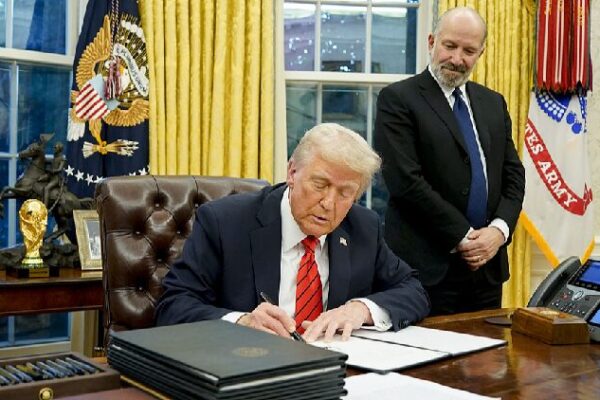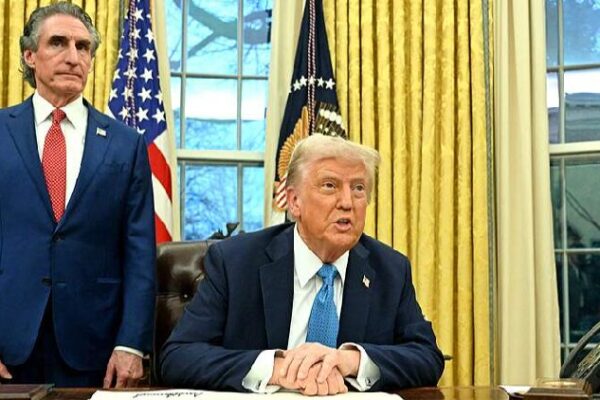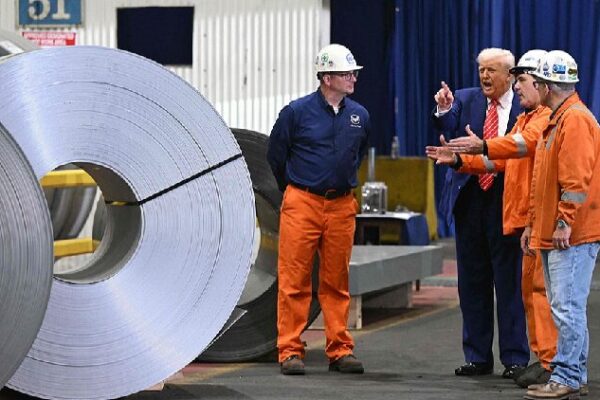The global trade landscape just got a lot more heated. On Wednesday, the United States implemented sweeping 25% tariffs on steel and aluminum imports, marking a significant escalation in President Donald Trump’s contentious trade policies.
The move has triggered swift backlash from U.S. allies and trading partners. The European Commission announced plans to impose counter-tariffs on 26 billion euros ($28 billion) worth of U.S. goods starting next month. Canada and the United Kingdom were quick to criticize the decision, with Canada considering reciprocal actions and British Trade Secretary Jonathan Reynolds stating that “all options are on the table” to protect national interests.
History Repeats Itself?
This isn’t the first time President Trump has targeted metal imports. Back in March 2018, he introduced a 25% tariff on steel and a 10% tariff on aluminum, aiming to bolster domestic production and reduce reliance on foreign metals. This time around, both steel and aluminum face a 25% tariff, intensifying concerns about the potential impact on the U.S. economy and global trade relations.
Saida Litosh, lead metals analyst at the London Stock Exchange Group (LSEG), warns that the increased tariffs could substantially raise costs for American manufacturers dependent on imported aluminum. “There’s also the issue of escalation—how will affected countries respond? Retaliatory tariffs could amplify the impact,” Litosh told Al Jazeera.
A Double-Edged Sword
The goal of these tariffs is to reduce the U.S. trade deficit and revive traditional manufacturing sectors, especially in states like Indiana and Pennsylvania. However, Li Fuyi, an associate researcher at the Institute for Foreign Economic Research under China’s National Development and Reform Commission, notes that these protectionist measures haven’t delivered the promised results. “Despite the tariffs, domestic steel production has fallen by nearly 10% compared to a decade ago. There’s no sign of the manufacturing prosperity that was promised,” Li told CMG.
In fact, studies suggest that the tariffs may be hurting the U.S. economy more than helping it. The Atlantic Council estimated that the 2018 tariffs cost the U.S. over 150,000 jobs in the steel industry alone. Another report from the U.S.-China Business Council indicated that nearly 250,000 Americans lost their jobs due to the tariffs.
Global Ripple Effects
The new tariffs are not just a domestic issue; they have significant international implications. The U.S. is a major importer of steel and aluminum, relying heavily on countries like Canada, Mexico, and Brazil. With the tariffs in place, American businesses importing these metals will face higher costs, which could lead to increased prices for consumers in industries ranging from automotive to electronics.
Economic analysts are also predicting a rise in inflation. Capitol Economics forecasts that the annual U.S. inflation rate could climb from 2.9% to as high as 4%, squeezing consumers even further.
There’s also the looming threat of a tariff tit-for-tat. “The proposed tariffs risk triggering retaliatory measures from key trade partners and disrupting the North American aluminum supply chain,” warns Litosh. Xu Xiangchun, information director of Shanghai Steel Union, adds that retaliatory actions could cause major disruptions to global trade flows and supply chains.
Lessons from History
The shadow of the 1930 Smoot-Hawley Tariff Act looms large. That legislation led to international backlash, damaged global trade, and is often cited as one of the factors that exacerbated the Great Depression. As the world watches these new tariffs take effect, many are questioning whether history might repeat itself.
The stakes are high, and the impact of these tariffs will be closely monitored by governments, businesses, and consumers worldwide. Whether these measures will achieve their intended goals or lead to unintended consequences remains to be seen.
Reference(s):
Trade war escalates as Trump's steel and aluminum tariffs take effect
cgtn.com








